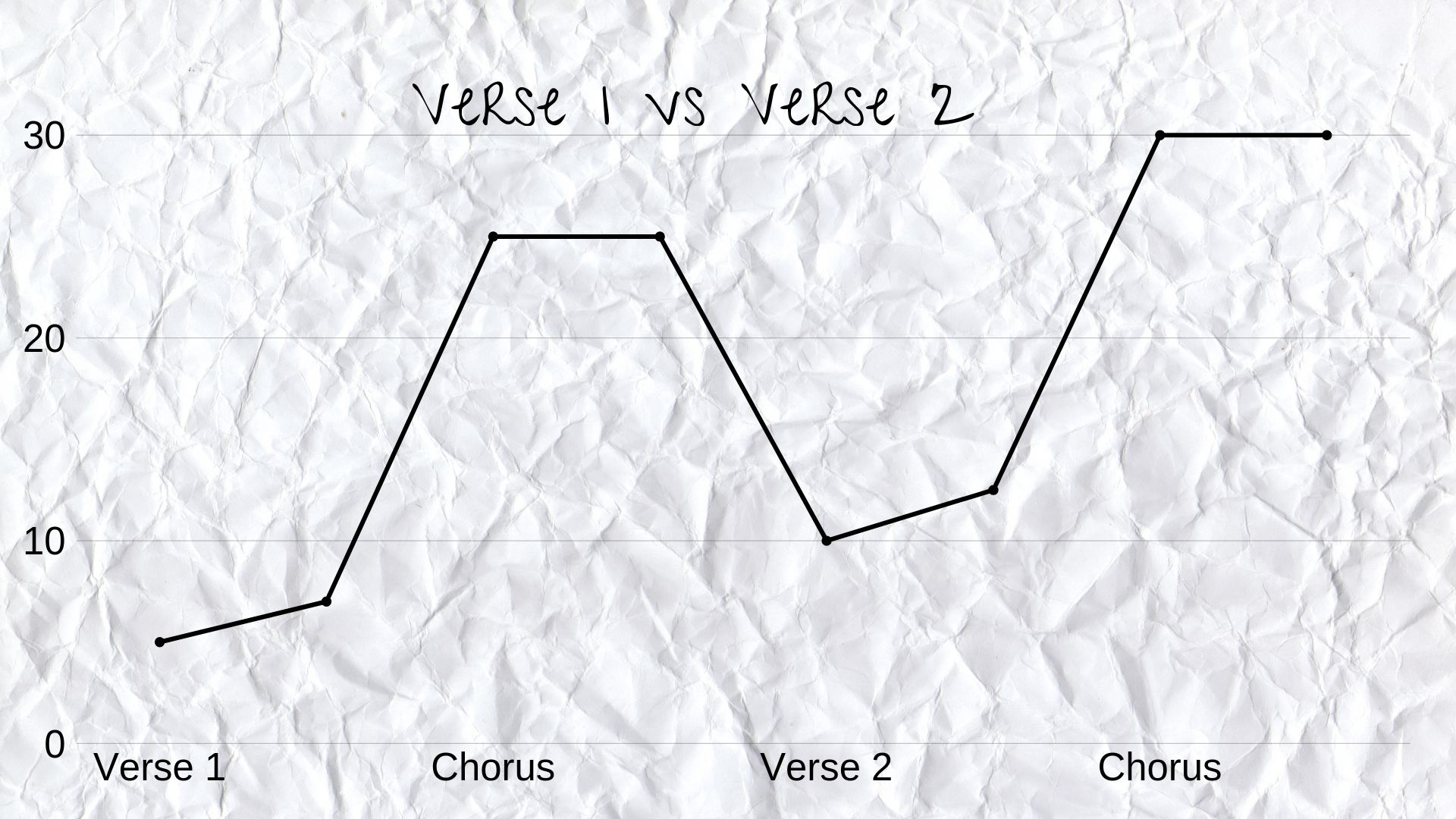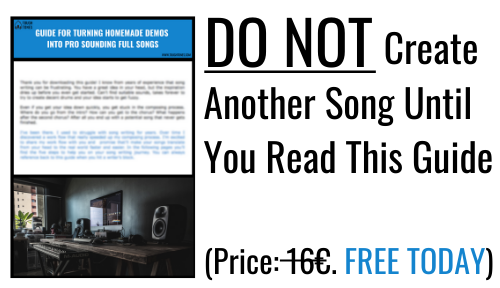How to Make Second Verse Different Than Verse One
Imagine listening to a song that you like. It flows smoothly from one section to another. The song takes you to a journey and you just love every bit of it. Nothing bothers you, or comes across as dull. That’s a characteristic of a great song. Now, picture yourself writing a song. From intro, all the way to the end of the first chorus everything goes with its own momentum, but then the second verse begins. You start to mull it over: “How can I make verse two engaging and different from verse one, or should I?”
Why Change Verse Two?
Like in your favourite song, you want the sections to run smoothly from one to the next. There cannot be a part that’s even remotely tiresome. Something has to be done for the verse two, for it to be interesting for the listener.
Changing it too much will make listeners confused, while not changing it at all might make it boring. A little variation might be all that you’re looking for, since listeners tend to like familiarity.

Wait a minute.. Does this apply to you, if you’re making brutal metal music, where sections are formed mostly with heavy riffs? Should you consider variating verses, even though most of the bands in your genre don’t?
Absolutely, do it. I think that’s something you could use as an advantage. In metal music this gets overlooked. Making things more interesting isn’t depending on a musical genre. There’s always something you could do to twist things up a little. Don’t settle. It could be something as simple as band members yelling “Hey!” as heard in verse two of The Haunted – Motionless.
How to Change Verse Two? – 5 Powerful Ways
The second verse doesn’t always have to be somehow bigger or more intense than verse one. You can add something more, or you can take something away. However, it has to offer something intriguing to the listener. Here are five powerful ways to differentiate the verse two:
1. Adding Voicings
Adding voicings by playing fuller chords or using more notes can be a subtle, but effective way to build on verse one. For example a bass in verse one, and a bass with a chording instrument in the next one. It could be also a guitar picking two notes in verse one, and a guitar that’s picking full chords in verse two.
Real life example: Hands Like Houses – Perspectives. They use bass and some random echoey noises in verse one. In verse two, a guitar comes along strumming chords.
2. Introducing a New Instrument
Introducing a fresh new instrument, or a lead part of an existing instrument is a way to shake things up. This could be something like a synth pad or strings in the background. It could also be a guitar lead part on top of rhythm guitars. It doesn’t really matter what the instrument is, as long as it brings something interesting to the table.
If you’re looking for an easy way to get some variation going on, introducing a new instrument or sound is totally worth experimenting with. Example: Apina – Kohu. In the midway of the second verse, a synth comes along.
3. Bringing in Vocal Harmonies
In addition to crew vocals like in Motionless by The Haunted, adding some vocal harmonies can be an effective way of spicing things up in verse two. Vocal harmonies are capable of lifting the verse two to another level compared to one without making it too different, because they’re noticeable enough, but not too overpowering.
Be careful of not using them too much though. You want to spare something for the chorus too. A Few strategic harmonies here and there might be all you need. Example: The Offspring – You’re Gonna Go Far, Kid.
4. Changing the Drum Beat
Changing the drum beat works every time, not only in choruses, but in verses too. You could keep everything exactly the same way and change just the drum beat and it instantly feels different.
Example: VersaEmerge – Whisperer. They change the drum beat and also drop the bass altogether from verse two, which further highlights the difference between the verses.
5. Changing Intensity
Like mentioned earlier, your verse two doesn’t always have to be more, bigger and better than verse one. It could be smaller with less tracks and intensity. This works beautifully too, because it’s a little surprising and offers breathing room for listeners. It works the other way around too (from small to big).
Take a listen to what “Mokoma” did on their song “Sinne missä aamu sarastaa”. First one is a straightforward thrash metal verse, and the second one more mellow and spacious.
Summary
To sum up, the five ways addressed in this post to make verse two different than verse one are: adding voicings, introducing a new instrument, vocal harmonies, changing the drum beat and changing the intensity. There’s no need to stick with only one way, as you can mix and match these any way you want.
In Behind Closed Doors by Rise Against, they drop the intensity a bit in the first half of the second verse with long guitar chords that start to feedback. At halfway through the guitar palm mutes come back in with additional lead guitar playing this little melody on top of them, works beautifully.
Hope this post was helpful to you. Let me know if you’d like me to cover some specific topic or if there’s anything else I could do for you. Leave a comment or shoot me an email.
Also, download my information packed PDF-guides to help you further with songwriting:
5 Steps to Create Music Faster (..and avoid the writer’s block!)
6 Step Guide to Realistic Midi Drums
Read also: “More Powerful Chorus with Arrangement” and
“More Powerful Chorus with Mixing”

2 thoughts on “How to Make Second Verse Different Than Verse One (REAL LIFE EXAMPLES)”